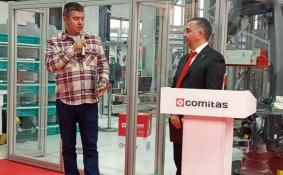Scientific & Practical Journal

Editorial News
Dear readers! We are pleased to present to you the eleventh issue of the journal in 2025. There are a lot of relevant and useful materials in the issue, which, hopefully, will not be ignored.
Dear readers! In September the CeMAT RUSSIA exhibition was held, which showed everyone that innovations and robotics are increasingly penetrating the logistics industry. We can safely say that many technologies are tested here, and only then they go out into the world. However, it is not only CeMAT RUSSIA that demonstrates the prevalence of the digital agenda.
Dear readers! This is the ninth issue of the journal, which turned out to be very rich and diverse. Traditionally, the issue is opened by an analyst. The material by Alina Nasyrova from the Market Guide Agency, dedicated to investments in warehouse complexes in Russia, recalls the importance of developing logistics infrastructure for the integrated development of regions.
PHOTO OF THE WEEK
CITATIONS
All News of Logistics
REC’s CEO Named 5 Logistics Barriers to Russian Exports
To increase export potential in Russia, it is necessary to improve infrastructure for export and transit flows of goods, use digital technologies to simplify customs procedures, introduce uniform technologies into the entire transportation process, make deliveries faster and develop government programs for production of present-day rolling stock.
This was told by Veronika Nikishina, CEO Russian Export Center (part of VEB.RF), at the meeting of the RSPP Commission on Transportation and Transport Infrastructure that discussed enhancement of export potential for transport infrastructure.
“Inadequately used capacity for automation of surveillance procedures continues to restrain further development of export infrastructure. At the moment, all stakeholder government agencies and players in the transport and logistics market are required to take a series of well-orchestrated actions in order to tackle the problems of enhancing export potential, which we would advise to include in the RSPP recommendations for discussion by the Government of the Russian Federation,” she said.
According to her, it is necessary to introduce a Smart Checkpoint concept for all types of transport with a single information system integrated with systems of surveillance authorities, innovative inspection hardware and software installed at the checkpoints to enable non-contact vehicle inspection and streamline control procedures at the exit points.












